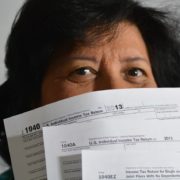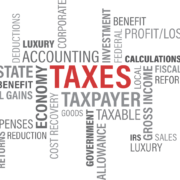Reduced 24% withholding rate applies to small businesses
Publication 1281, Backup Withholding for Missing and Incorrect Name/TIN(s), posted last month on IRS.gov, has been updated to reflect a key change made by the Tax Cuts and Jobs Act (TCJA). As a result of this change, effective Jan. 1, 2018, the backup withholding tax rate dropped from 28 percent to 24 percent.
The Internal Revenue Service today urged small businesses and other payers to check out the agency’s newly-revised backup withholding publication, now available on IRS.gov.
In general, backup withholding applies in various situations including, but not limited to, when a taxpayer fails to supply their correct taxpayer identification number (TIN) to a payer. Usually, a TIN is a Social Security number (SSN), but in some instances, it can be an Employer Identification Number (EIN), Individual Taxpayer Identification Number (ITIN) or Adoption Taxpayer Identification Number (ATIN). Backup withholding also applies, following notification by the IRS, where a taxpayer underreported interest or dividend income on their federal income tax return.
Publication 1281 is packed with useful information designed to help any payer required to impose backup withholding on any of their payees. Among other things, the publication features answers to 34 frequently asked questions (FAQs). One of them, Q/A 34, points out that a payer who mistakenly backup withheld at an incorrect rate (such as the old 28-percent tax rate, rather than the new 24-percent rate), need not refund the difference to the payee. However, a payer who chooses to refund the difference must do so before the end of the year and can then make appropriate adjustments to their federal tax deposits.
When backup withholding applies, payers must backup withhold tax from payments not otherwise subject to withholding. Payees may be subject to backup withholding if they:
- Fail to give a TIN,
- Give an incorrect TIN,
- Supply a TIN in an improper manner,
- Underreport interest or dividends on their income tax return, or
- Fail to certify that they’re not subject to backup withholding for underreporting of interest and dividends.
Backup withholding can apply to most kinds of payments reported on Form 1099, including:
- Interest payments;
- Dividends;
- Patronage dividends, but only if at least half of the payment is in money;
- Rents, profits or other income;
- Commissions, fees or other payments for work performed as an independent contractor;
- Payments by brokers and barter exchange transactions;
- Payments by fishing boat operators, but only the portion that’s in money and represents a share of the proceeds of the catch;
- Payment card and third-party network transactions; and
- Royalty payments.
Backup withholding also may apply to gambling winnings that aren’t subject to regular gambling withholding.
To stop backup withholding, the payee must correct any issues that caused it. They may need to give the correct TIN to the payer, resolve the underreported income and pay the amount owed, or file a missing return. The Backup Withholding page, Publication 505, Tax Withholding and Estimated Tax and Publication 1335, Backup Withholding Questions and Answers have more information.
Payers report any backup withholding on Form 945, Annual Return of Withheld Federal Income Tax. The 2018 form is due Jan. 31, 2019. For more information about depositing backup withholding taxes, see Publication 15, Employer’s Tax Guide. Payers also show any backup withholding on information returns, such as Forms 1099, that they furnish to their payees and file with the IRS.
Like regular federal income tax withholding, a payee can claim credit for any backup withholding when they file their 2018 federal income tax return.
For updates on this and other TCJA provisions, visit IRS.gov/taxreform.
More Information: https://wxccorporation.com/irs-2018-employer-reimbursements-for-employees/













